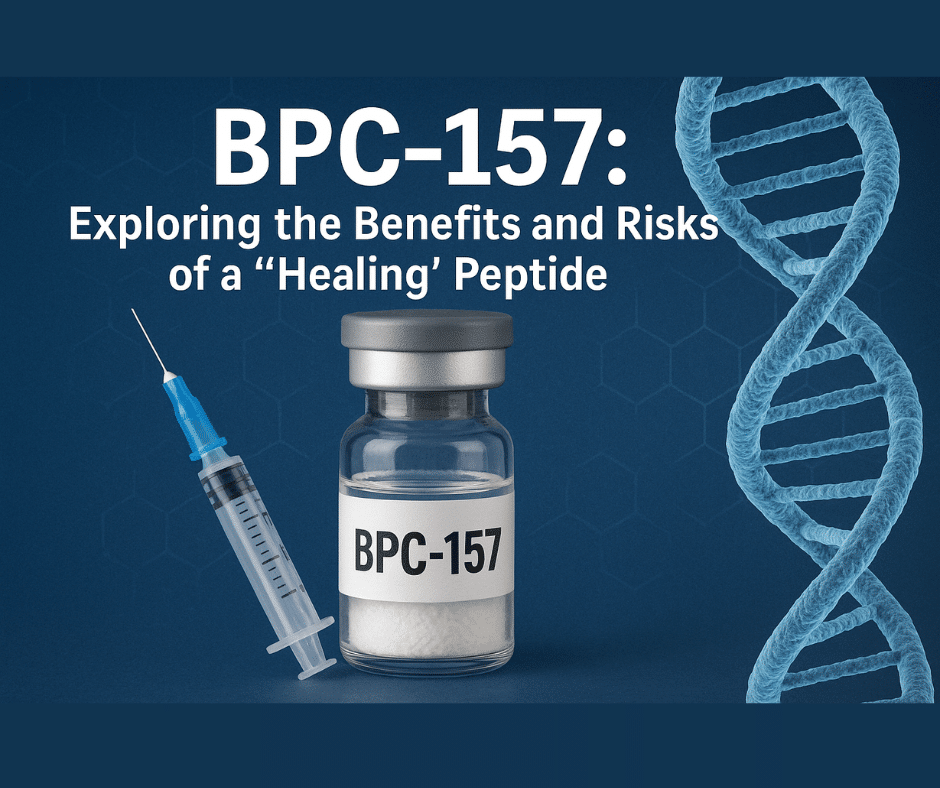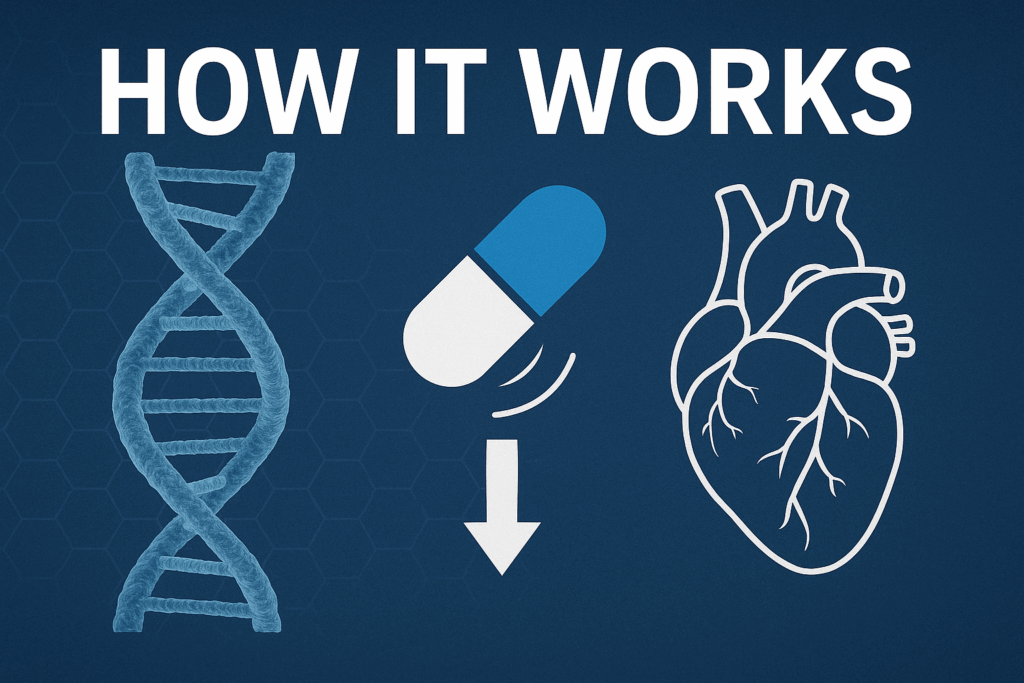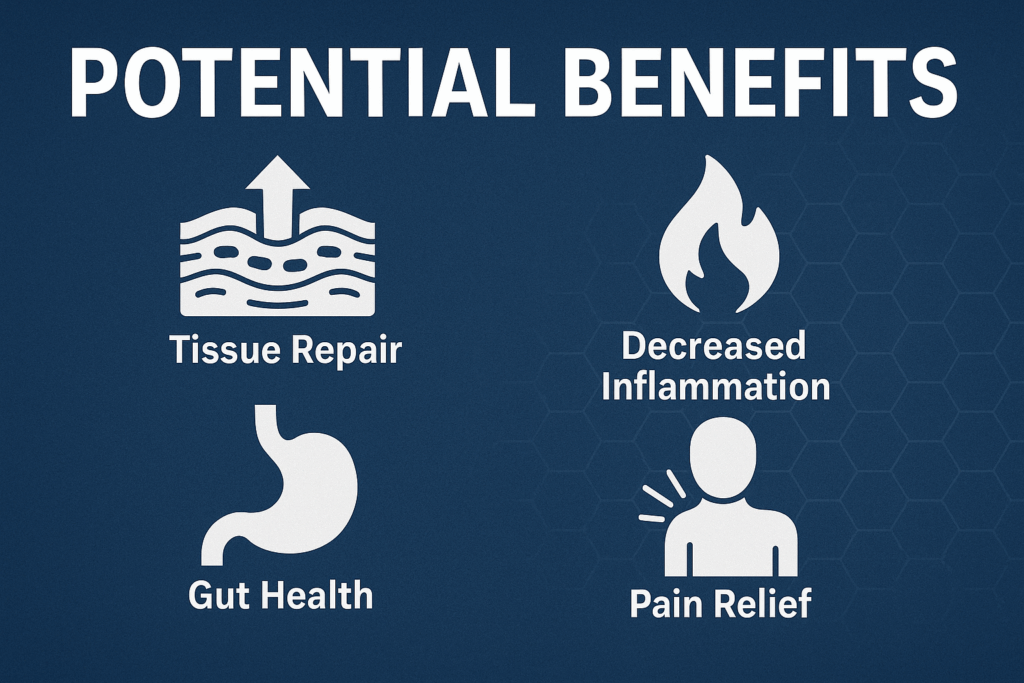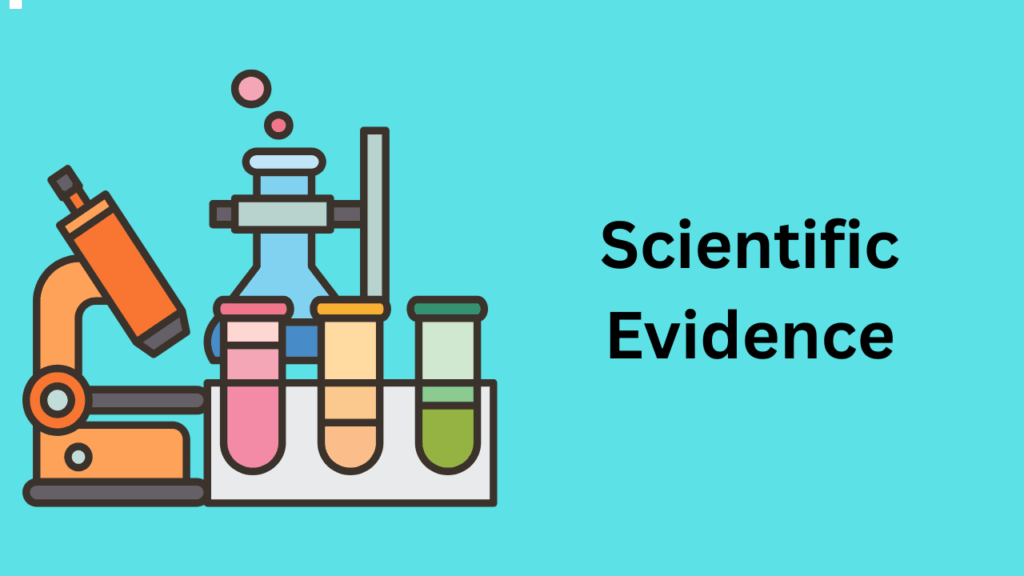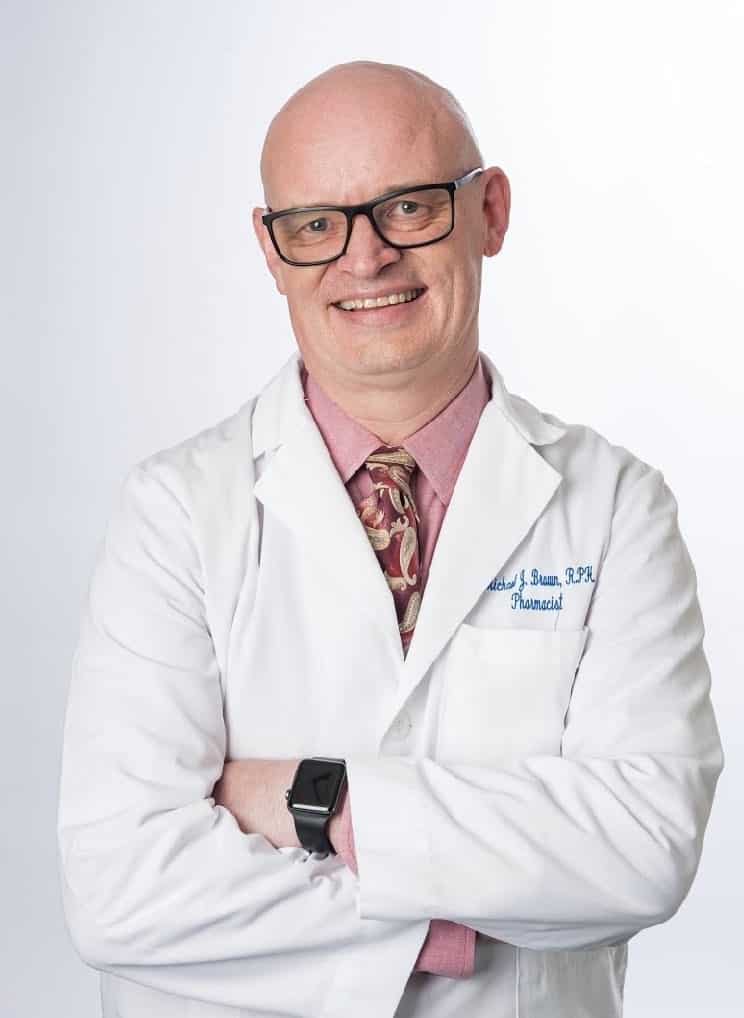- https://www.orthoandwellness.com/blog/bpc-157-update-and-deep-dive-miracle-healing-peptide-or-hidden-danger#:~:text=aling%20benefits%20%E2%80%93%20from%20repairing,its%20safety%20remains%20largely%20unprovenorthoandwellness.com.
- https://www.orthoandwellness.com/blog/bpc-157-update-and-deep-dive-miracle-healing-peptide-or-hidden-danger#:~:text=BPC,even%20protecting%20organs%20from%20damage
- https://pmc.ncbi.nlm.nih.gov/articles/PMC11053547/#:~:text=Presently%2C%20BPC%20157%20therapy%20has,should%20be%20extended%20to%20other
- https://pmc.ncbi.nlm.nih.gov/articles/PMC11053547/#:~:text=limitations,years%20later%20to%20Robert%E2%80%99s%20cytoprotection
- https://pmc.ncbi.nlm.nih.gov/articles/PMC11053547/#:~:text=BPC%20157%20therapy%20consistently%20holds,10%5D%29.%20Namely%2C%20as%20easily
- https://pmc.ncbi.nlm.nih.gov/articles/PMC11053547/#:~:text=%2C10%20%2C%2049,Worth%20mentioning%2C%20as%20Selye%E2%80%99s%20stress
- https://www.orthoandwellness.com/blog/bpc-157-update-and-deep-dive-miracle-healing-peptide-or-hidden-danger#:~:text=It%20works%2C%20at%20least%20in,areas%20and%20start%20rebuilding%20tissue
- https://www.orthoandwellness.com/blog/bpc-157-update-and-deep-dive-miracle-healing-peptide-or-hidden-danger#:~:text=It%20works%2C%20at%20least%20in,areas%20and%20start%20rebuilding%20tissue
- https://www.mdpi.com/1424-8247/18/2/185#:~:text=proliferation%2C%20diffusion%2C%20and%20metastasis%20,209%2C112%20%2C%20211%2C114
- https://www.mdpi.com/1424-8247/18/2/185#:~:text=proliferation%2C%20diffusion%2C%20and%20metastasis%20,209%2C112%20%2C%20211%2C114
- https://www.mdpi.com/1424-8247/18/2/185#:~:text=out%20to%20gain%20information%20on,L
- https://www.mdpi.com/1424-8247/18/2/185#:~:text=Similarly%2C%20NO%20that%20has%20been,116%20%2C%20217%2C120
- https://pmc.ncbi.nlm.nih.gov/articles/PMC6271067/#:~:text=growth%20hormone%20receptor%20was%20revealed,treated%20tendon%20fibroblasts%20with%20growth
- https://pmc.ncbi.nlm.nih.gov/articles/PMC6271067/#:~:text=increased%20the%20expression%20of%20growth,to%20the%20healing%20of%20tendon
- https://pmc.ncbi.nlm.nih.gov/articles/PMC11053547/#:~:text=signaling%20role%20is%20complete%29,system%20relations%20with%20the
- https://pmc.ncbi.nlm.nih.gov/articles/PMC6271067/#:~:text=BPC%20157%2C%20a%20pentadecapeptide%20derived,dependently
- https://pmc.ncbi.nlm.nih.gov/articles/PMC6271067/#:~:text=explore%20the%20effect%20of%20BPC,time%20PCR.%20Janus%20kinase%202
- https://www.frontiersin.org/journals/pharmacology/articles/10.3389/fphar.2021.627533/full#:~:text=Significance%3A%20The%20antiulcer%20peptide%2C%20stable,to%20the%20other%20tissues%20healing
- https://www.frontiersin.org/journals/pharmacology/articles/10.3389/fphar.2021.627533/full#:~:text=its%20therapeutic%20effect%20in%20the,2018
- https://www.frontiersin.org/journals/pharmacology/articles/10.3389/fphar.2021.627533/full#:~:text=Critical%20Issues%3A%20By%20simultaneously%20curing,counteract%20both%20arterial%20and%20venous
- https://pmc.ncbi.nlm.nih.gov/articles/PMC11053547/#:~:text=Presently%2C%20BPC%20157%20therapy%20has,should%20be%20extended%20to%20other
- https://www.mdpi.com/1424-8247/18/2/185#:~:text=Scholar%20scholar.google.com%20%5D%20,417%20Google
- https://www.mdpi.com/1424-8247/18/2/185#:~:text=,PubMed
- https://www.mdpi.com/1424-8247/18/2/185#:~:text=,PubMed
- https://www.mdpi.com/1424-8247/18/2/185#:~:text=Physiol,CrossRef
- https://www.mdpi.com/1424-8247/18/2/185#:~:text=Physiol,CrossRef
- https://pmc.ncbi.nlm.nih.gov/articles/PMC8504390/#:~:text=of%20the%20gut,advanced%20healing%20and%20functional%20recovery
- https://pmc.ncbi.nlm.nih.gov/articles/PMC8504390/#:~:text=of%20the%20gut,advanced%20healing%20and%20functional%20recovery
- https://pmc.ncbi.nlm.nih.gov/articles/PMC8504390/#:~:text=The%20pleiotropic%20beneficial%20effects%20of,in%20rats%20subjected%20to%20stroke
- https://www.orthoandwellness.com/blog/bpc-157-update-and-deep-dive-miracle-healing-peptide-or-hidden-danger#:~:text=,due%20to%20the%20lack%20of
- https://www.frontiersin.org/journals/pharmacology/articles/10.3389/fphar.2021.627533/full#:~:text=A%20special%20point%20confronts%20BPC,2014%29%2C%20and%20blood
- https://pmc.ncbi.nlm.nih.gov/articles/PMC11053547/#:~:text=Presently%2C%20BPC%20157%20therapy%20has,should%20be%20extended%20to%20other
- https://www.orthoandwellness.com/blog/bpc-157-update-and-deep-dive-miracle-healing-peptide-or-hidden-danger#:~:text=Despite%20the%20peptide%E2%80%99s%20popularity%20online%2C,why%20they%20offer%20limited%20reassurance
- https://www.orthoandwellness.com/blog/bpc-157-update-and-deep-dive-miracle-healing-peptide-or-hidden-danger#:~:text=%2A%20Older%20European%20trials%3A%20BPC,or%20enthusiastic%20investigators
- https://www.orthoandwellness.com/blog/bpc-157-update-and-deep-dive-miracle-healing-peptide-or-hidden-danger#:~:text=,%E2%80%9Ccancelled%20submission%20of%20the%20results%E2%80%9D
- https://www.orthoandwellness.com/blog/bpc-157-update-and-deep-dive-miracle-healing-peptide-or-hidden-danger#:~:text=However%2C%20the%20researchers%20never%20published,%E2%80%9Ccancelled%20submission%20of%20the%20results%E2%80%9D
- https://www.orthoandwellness.com/blog/bpc-157-update-and-deep-dive-miracle-healing-peptide-or-hidden-danger#:~:text=In%20summary%2C%20human%20evidence%20on,of%20tumors%3F%20These%20questions%20remain
- https://www.orthoandwellness.com/blog/bpc-157-update-and-deep-dive-miracle-healing-peptide-or-hidden-danger#:~:text=Image%3A%20w,tumors%20and%20facilitate%20their%20spread
- https://www.orthoandwellness.com/blog/bpc-157-update-and-deep-dive-miracle-healing-peptide-or-hidden-danger#:~:text=A%202023%20pharmaceutical%20review%20pointed,vascular%20growth%2C%20in%20animal%20models
- https://www.orthoandwellness.com/blog/bpc-157-update-and-deep-dive-miracle-healing-peptide-or-hidden-danger#:~:text=BPC,not%20meaningfully%20shrink%20the%20tumors
- https://www.orthoandwellness.com/blog/bpc-157-update-and-deep-dive-miracle-healing-peptide-or-hidden-danger#:~:text=in%20humans,not%20meaningfully%20shrink%20the%20tumors
- https://www.orthoandwellness.com/blog/bpc-157-update-and-deep-dive-miracle-healing-peptide-or-hidden-danger#:~:text=benefit%20%E2%80%93%20and%20it%20leaves,in%20that%20very%20limited%20context
- https://www.orthoandwellness.com/blog/bpc-157-update-and-deep-dive-miracle-healing-peptide-or-hidden-danger#:~:text=These%20mixed%20signals%20underscore%20how,cancer%20cells%20in%20our%20body%E2%80%9D
- https://www.orthoandwellness.com/blog/bpc-157-update-and-deep-dive-miracle-healing-peptide-or-hidden-danger#:~:text=These%20mixed%20signals%20underscore%20how,cancer%20cells%20in%20our%20body%E2%80%9D
- https://www.mdpi.com/1424-8247/18/2/185#:~:text=Hence%2C%20the%20use%20of%20BPC,131
- https://www.mdpi.com/1424-8247/18/2/185#:~:text=Angiogenesis%20can%20also%20be%20mediated,1
- https://www.mdpi.com/1424-8247/18/2/185#:~:text=has%20been%20speculated%20that%20this,226
- https://www.mdpi.com/1424-8247/18/2/185#:~:text=either%20cardiovascular%20pathological%20processes%20or,121%20%2C%20220
- https://www.mdpi.com/1424-8247/18/2/185#:~:text=As%20just%20mentioned%20,While%20its%20overexpression%20is
- https://www.mdpi.com/1424-8247/18/2/185#:~:text=proline%20oxidase%20,number%20of%20different%20naturally%20occurring
- https://www.mdpi.com/1424-8247/18/2/185#:~:text=death%20,be%20an%20underlying%20cause%20of
- https://www.mdpi.com/1424-8247/18/2/185#:~:text=%28ONOO%E2%88%92%2FONOOH%29%20,244%2C146
- https://www.mdpi.com/1424-8247/18/2/185#:~:text=increase%20in%20NO%20beyond%20the,heme%20results%20in%20its%20low
- https://www.mdpi.com/1424-8247/18/2/185#:~:text=,260
- https://www.mdpi.com/1424-8247/18/2/185#:~:text=,260
- https://www.mdpi.com/1424-8247/18/2/185#:~:text=still%20unknown,expected%20adverse%20consequences%20of%20the
- https://www.rupahealth.com/post/bpc-157-science-backed-uses-benefits-dosage-and-safety#:~:text=Potential%20Side%20Effects%2C%20Safety%20Profile%2C,Regulatory%20Status%20of%20BPC%20157
- https://www.orthoandwellness.com/blog/bpc-157-update-and-deep-dive-miracle-healing-peptide-or-hidden-danger#:~:text=%2A%20Older%20European%20trials%3A%20BPC,or%20enthusiastic%20investigators
- https://www.frontiersin.org/journals/pharmacology/articles/10.3389/fphar.2021.627533/full#:~:text=Significance%3A%20The%20antiulcer%20peptide%2C%20stable,to%20the%20other%20tissues%20healing
- https://pmc.ncbi.nlm.nih.gov/articles/PMC6271067/#:~:text=explore%20the%20effect%20of%20BPC,time%20PCR.%20Janus%20kinase%202
- https://www.frontiersin.org/journals/pharmacology/articles/10.3389/fphar.2021.627533/full#:~:text=A%20special%20point%20confronts%20BPC,2014%29%2C%20and%20blood
- https://pmc.ncbi.nlm.nih.gov/articles/PMC8504390/#:~:text=Sever%20encephalophaties%20and%20BPC%20157
- https://www.frontiersin.org/journals/pharmacology/articles/10.3389/fphar.2021.627533/full#:~:text=Critical%20Issues%3A%20By%20simultaneously%20curing,vessels%2C%20there%20is%20circumvention%20of
- https://pmc.ncbi.nlm.nih.gov/articles/PMC8504390/#:~:text=Study%20Noxious%20procedure%20BPC%20157,necrosis%2C%20extensive%20microvesicular%20steatosis%2C%20and
- https://pmc.ncbi.nlm.nih.gov/articles/PMC8504390/#:~:text=of%20the%20gut,advanced%20healing%20and%20functional%20recovery
- https://pmc.ncbi.nlm.nih.gov/articles/PMC8504390/#:~:text=%28counteracted%20tail%20paralysis%29
- https://www.frontiersin.org/journals/pharmacology/articles/10.3389/fphar.2021.627533/full#:~:text=Healing%20of%20the%20wounds%20is,of%20BPC%20157%20in%20ischemia%2Freperfusion
- https://www.frontiersin.org/journals/pharmacology/articles/10.3389/fphar.2021.627533/full#:~:text=Future%20Directions%3A%20BPC%20157%20rapidly,seen%20with%20BPC%20157%20therapy[/efn-note] It also normalized levels of neurotransmitters and hormones in various stress conditions (leading some to propose it has a balancing effect on the brain-gut axis).68https://www.frontiersin.org/journals/pharmacology/articles/10.3389/fphar.2021.627533/full#:~:text=own%20healing%20angiogenic%20effect%20,2018
- https://www.sciencedirect.com/science/article/abs/pii/S027323002030091X#:~:text=Preclinical%20safety%20evaluation%20of%20body,mice%2C%20rats%2C%20rabbits%20and
- https://pmc.ncbi.nlm.nih.gov/articles/PMC11053547/#:~:text=Presently%2C%20BPC%20157%20therapy%20has,should%20be%20extended%20to%20other
- https://www.mdpi.com/1424-8247/18/2/185#:~:text=The%20broad%20spectrum%20of%20beneficial,Table%202
- https://www.orthoandwellness.com/blog/bpc-157-update-and-deep-dive-miracle-healing-peptide-or-hidden-danger#:~:text=%2A%20Older%20European%20trials%3A%20BPC,or%20enthusiastic%20investigators
- https://www.frontiersin.org/journals/pharmacology/articles/10.3389/fphar.2021.627533/full#:~:text=Significance%3A%20The%20antiulcer%20peptide%2C%20stable,to%20the%20other%20tissues%20healing
- https://www.orthoandwellness.com/blog/bpc-157-update-and-deep-dive-miracle-healing-peptide-or-hidden-danger#:~:text=,%E2%80%9Ccancelled%20submission%20of%20the%20results%E2%80%9D
- https://www.orthoandwellness.com/blog/bpc-157-update-and-deep-dive-miracle-healing-peptide-or-hidden-danger#:~:text=,%E2%80%9Ccancelled%20submission%20of%20the%20results%E2%80%9D
- https://www.orthoandwellness.com/blog/bpc-157-update-and-deep-dive-miracle-healing-peptide-or-hidden-danger#:~:text=,due%20to%20the%20lack%20of
- https://www.orthoandwellness.com/blog/bpc-157-update-and-deep-dive-miracle-healing-peptide-or-hidden-danger#:~:text=into%20the%20knee%20joint,injections%2C%20presenting%20a%20clear%20conflict
- https://www.orthoandwellness.com/blog/bpc-157-update-and-deep-dive-miracle-healing-peptide-or-hidden-danger#:~:text=control%20group,underscores%20the%20need%20for%20independent
- https://www.orthoandwellness.com/blog/bpc-157-update-and-deep-dive-miracle-healing-peptide-or-hidden-danger#:~:text=patients%20paid%20for%20out,underscores%20the%20need%20for%20independent
- https://www.orthoandwellness.com/blog/bpc-157-update-and-deep-dive-miracle-healing-peptide-or-hidden-danger#:~:text=Image%3A%20112
- https://www.orthoandwellness.com/blog/bpc-157-update-and-deep-dive-miracle-healing-peptide-or-hidden-danger#:~:text=,unnoticed%20in%20such%20a%20small
- https://www.orthoandwellness.com/blog/bpc-157-update-and-deep-dive-miracle-healing-peptide-or-hidden-danger#:~:text=,the%20bladder%20mucosa%3F%20NOBODY%20KNOWS
- https://www.orthoandwellness.com/blog/bpc-157-update-and-deep-dive-miracle-healing-peptide-or-hidden-danger#:~:text=Moreover%2C%20this%20trial%20was%20conducted,com
- https://www.orthoandwellness.com/blog/bpc-157-update-and-deep-dive-miracle-healing-peptide-or-hidden-danger#:~:text=with%20a%20stake%20in%20the,Wellness%20noted%2C%20without%20comprehensive
- https://www.orthoandwellness.com/blog/bpc-157-update-and-deep-dive-miracle-healing-peptide-or-hidden-danger#:~:text=Scientific%20Background%3A%20Healing%20Pathways%20with,a%20Dark%20Side
- https://www.orthoandwellness.com/blog/bpc-157-update-and-deep-dive-miracle-healing-peptide-or-hidden-danger#:~:text=A%202023%20pharmaceutical%20review%20pointed,vascular%20growth%2C%20in%20animal%20models
- https://www.orthoandwellness.com/blog/bpc-157-update-and-deep-dive-miracle-healing-peptide-or-hidden-danger#:~:text=with%20a%20stake%20in%20the,Wellness%20noted%2C%20without%20comprehensive
- https://www.orthoandwellness.com/blog/bpc-157-update-and-deep-dive-miracle-healing-peptide-or-hidden-danger#:~:text=with%20a%20stake%20in%20the,Wellness%20noted%2C%20without%20comprehensive
×
Why Choose to Autoship?
- Automatically re-order your favorite products on your schedule.
- Easily change the products or shipping date for your upcoming Scheduled Orders.
- Pause or cancel any time.
